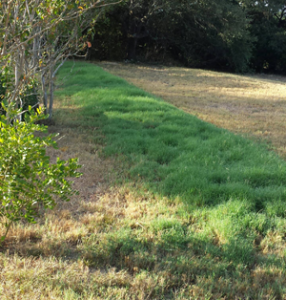For service call (210) 890-2778
or click here to request service
How Can I Find My Drainfield?

Locating your septic system’s drainfield isn’t always an easy task — here are three things you can do to help you locate it.
- Look at your yard. Although it is common to not have any signs of the drainfield location, look for lines of green grass, dead grass, or depressed areas. These could be signs of your drainfield location.
- Check for septic records with the permitting authority (usually the county), the installer, or the designer. Warning: drawings of septic systems are not always accurate.
- Probe your yard and feel for gravel. Your drainfield’s lines are buried in gravel, which helps the wastewater treatment process — finding gravel may be a sign you’ve found your drainfield. Warning: this may prove difficult in areas where the native soil is hard/rocky to probe into.
Why do I need to know where my drainfield is?
We write a lot about septic tanks, but the truth is that the drainfield is the most important part of a septic system — it’s where most of the treatment happens.
You can’t extend the life of your drainfield if you don’t know where it is. You may accidentally damage the lines if you:
- Drive over them – Driving a car or heavy equipment over the lines can crush them.
- Build over them – House additions, sheds, pools, driveways, etc. can cause damage and make the lines harder to access for repairs.
- Landscape over/near them – Trees and septic systems don’t mix. Invading roots can cause line damage.
Want to learn more about how your septic system works and what you can do to keep it healthy? Download our free guide, Understanding and Maintaining Your Septic System.
